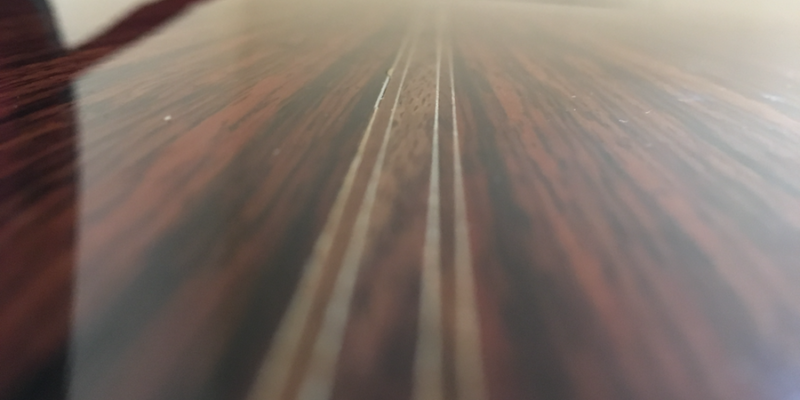Sequential Planting

Planting or preparing is the act of putting a right hand finger on the string before it has to play. This produces a lot of security and can improve overall accuracy. Sequential planting is simply planting one finger after another, and differs from a full plant where all RH fingers of an arpeggio pattern are put on the string before any fingers play.
Breaking down p i m
To illustrate this, let’s look at the arpeggio p i m. Usually this can be played with a full plant, but its worth every players time to explore sequential planting even for ascending arpeggios. I use sequential planting almost exclusively.
As p plays, i prepares and touches the string it’s about to play. As i plays, m plants and prepares. Finally as m plays, p comes back to the string and the pattern starts over.
The Trouble
Where most players, especially beginners, get into trouble is they treat each movement individually. This means their arpeggios look something like this.
- p plays
- i plants
- i plays
- m plants
- m plays
- p plants
- p plays, repeat
In other words, they treat the plant and execution as separate parts. In reality, p playing and i planting should feel as if they are the same motion–they both happen at the same time. In the beginning some separation is okay, but strive towards fluency of moving a finger into position and playing with another at the same time.
This can be practiced by building an arpeggio from the bottom up. So practice just playing p. Then play p while i plants (don’t play i yet). Then play p while i plants, then play, i, stop and repeat this process a few times. Then add in a plant of m at the end. Finally play m, and eventually add in a plant ofp. Essentially this is constructing an arpeggio one finger at a time.
Does anyone else use sequential planting exclusively? If not, where do you use it?

malaina
Have you ever used sequential planting in tremolo exercises? I don’t know if it’s in the scott tennant book- Pumping Nylon, but my teacher showed me some exercises using sequential planting when working on tremolo.
Chris
I have used them on tremolo before, but without much success. The whole staccato – sequential planting thing in Pumping Nylon didn’t work for me.
Simply put, my tremolo sucks. But the things that’s made it better is practicing in small bursts. Starting with a m until just those two felt good, then a m i until the three felt good. Then a m i p until one time through the pattern felt correct. After that it’s just adding one more finger at a time until the whole tremolo pattern is played a 3 or 4 times through (a m i p, then a m i p a m, then amipami, amipamip, etc). That is enough to get a sense of what it feels like, from there it become more of a sensation thing rather than a conscious thought thing.
a and m are played together in what’s called a composite stroke, an idea I took from Stanley Yates. It’s just like playing am together, but you put a bit more tension on the finger that’s to play second (m in the case of tremolo). The result is that one with more tension plays immediately after the first. It’s a strange sensation to get at first but works really well.
Charles Mokotoff
Chris, this is spot on…but I can say I have a darn good tremolo and the planting technique helped a great deal (albeit about 100 years ago). The key is not just to land the next finger, but to be sure when it comes down early in prep that it hits the string exactly where it is going to sound round and full, if you do that for a few weeks, I would be surprised if your tremolo didn’t sing.
Some students just do this wrong, they only stop the string to get the preparation feel, then slightly move it to where it should be striking the string, that small movement will destroy the tremolo.
josh
i am a beginner and i think this little article has some excellent suggestions. however I have a question about planting – in which part of the finger does the string rest exactly?
i had been aiming for getting the string almost as though it’s wedged between my flesh and the nail where it fits sngly in a little groove. but when practising sequential planting quite quickly ‘aiming’ like this is very difficult and sometimes the string will rest more like against my finger tip before being struck by my nail.
Should I always be aiming for the groove between nail and flesh?
Another question: I have also seen ‘pumping nylon’ – in a full speed tremelo does proper planting really take place?
Christopher Davis
Hey, Josh. Yes, you should always be aiming for that little grove. It’s hard at first, but it gets easier as you get more practice in.
It’s doubtful that planting actually takes place in full speed tremolo. It’s probably more like preparation over the string than a plant.